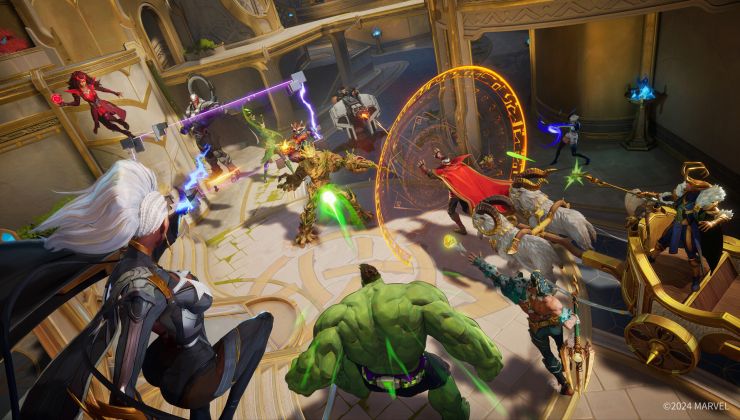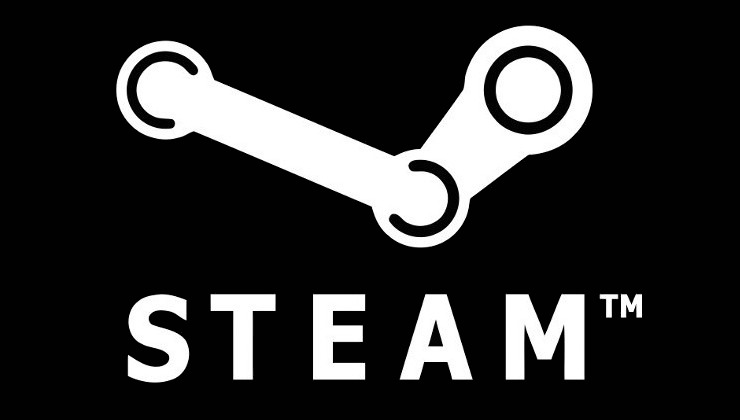Hello all, this aims to be a weekly recap of everything SteamOS related coming from both news stories and updates, to personal experience of my own.
I don't know about all of you, but I'm really excited for SteamOS. A few years ago I remember googling "Best Linux Distro for Gaming," only to read time and time again that all distributions are the same when it comes to gaming, or the infamous "Linux Gaming?? Haha." Well no more. Valve has been working on what it intends to become the best operating system for gaming, and this is my experience so far.
I had been following SteamOS updates ever since it was announced, and just recently I decided to take the plunge. So I bought a spare 120GB ssd with the sole purpose of running SteamOS on my rig.
My experience is obviously not "ideal" given that I have an AMD gpu, but I still think this can be a relevant experience using SteamOS as a whole because not every gamer or Steam machine will ship with an Nvidia card.
The most recent updates to SteamOS (Update 118):
My Rig:
Intel Core i5 3570K Overclocked to 4.5Ghz
AMD R9 290X (Latest Stable Drivers at time of Writing)
32GB DDR3 1866Mhz Ram
Maximus V Gene Motherboard
Corsair 860i Power Supply
Corsair H80i water cooler
Alienware Aurora r4 case (bought off of eBay and rebuilt my rig inside)
120GB Kingston HyperX ssd
2x 250GB Samsung 840 Evo ssds (Windows 8.1)
My experiment is supposed to be a representation of SteamOS in its default state, and as such no modifications, additional packages, or manual driver updates will be installed. (Besides maybe my Mobile-broadband drivers). My system is not compatible with the "easy" SteamOS install, so I had to download the custom installer and extract it to a usb drive.
Once I had the system booted with the SteamOS usb, installation was really straight forward. All I had to do was select "Automated install" and let the installer do it's thing (The other ssds were unplugged to avoid any issues). Once that part was finished the system rebooted into big picture mode where I had to first download an update to steam (luckily my wifi card was supported OOTB) and then login to steam. Once logged in, SteamOS restarted and finished installing and the restarted back to big picture mode. What I found rather interesting was that valve listed all of these steps one had to take to install SteamOS this way, but I didn't have to do any of it. I didn't have to run the post login script or even log in to the "desktop" mode if I didn't want to. Perhaps their documentation needs to be updated.
There I had it. A freshly installed copy of SteamOS on my machine. The first thing I noticed was that AMD's driver automatically set underscan on (the image didn't fill the entire monitor), and while this wasn't a deal breaker, it was annoying and had to be fixed. I did some searching around and came across a thread on Ask Ubuntu that required you to run a few commands to fix the issue.
To fix steamOS undersscan I had to:
Enable Desktop Mode (In the settings)
Switch to desktop mode
Set the root password by using the command:
Then Run
And finally
Followed by a reboot
And bam that issue was gone.
Secondly I noticed that sound over HDMI was cracking and popping, but to fix that I just hooked my speakers up to my computer via the motherboard's audio and that issue was solved. Obviously this is still an issue that needs to be solved, but I was able to get around it in a way that satisfied me.
From that moment on, I found it had to believe how smooth the system ran. Never before have I been able to experience big picture mode with such fluidity. The animations didn't skip around nor was there any screen tearing, something I couldn't say about my previous experiences with BPM and Linux.
The next thing I did was sync my Xbox 360 wireless controller to have it work flawlessly right away, something I couldn't say before on Linux. I downloaded and fired up Amnesia: a Machine for Pigs (small download) to find that the game ran flawlessly on max details, which frankly I was a bit surprised give AMD's bad rap for their Linux drivers (Granted it's not the most demanding game). On a side note, launching the "settings launcher" for amnesia resulted in a low resolution full screen mess of a window that was a real pain to change settings in. (The game defaulted to low because I had an "unrecognised" video card).
Once I straightened that out everything was smooth as silk.
SteamOS has earned it's right to stay on my rig for sure. I cannot wait to see what improvements AMD and valve push to help improve my experience. I plan to keep you guys updated if there's any demand.
Tonight I try to tackle the Witcher 2, wrapper and all...
I don't know about all of you, but I'm really excited for SteamOS. A few years ago I remember googling "Best Linux Distro for Gaming," only to read time and time again that all distributions are the same when it comes to gaming, or the infamous "Linux Gaming?? Haha." Well no more. Valve has been working on what it intends to become the best operating system for gaming, and this is my experience so far.
I had been following SteamOS updates ever since it was announced, and just recently I decided to take the plunge. So I bought a spare 120GB ssd with the sole purpose of running SteamOS on my rig.
My experience is obviously not "ideal" given that I have an AMD gpu, but I still think this can be a relevant experience using SteamOS as a whole because not every gamer or Steam machine will ship with an Nvidia card.
The most recent updates to SteamOS (Update 118):
Quote•openssl - upstream security fixes, CVE-2014-0195, CVE-2014-0224, CVE-2014-0221, CVE-2014-3470, http://github.com/ValveSoftware/SteamOS/issues/177
•steamos-autoupdate - install updates at shutdown
•unattended-upgrades - defer updates until shutdown
•gnutls26 - upstream security fix CVE-2014-3466
•lxml - upstream security update CVE-2014-3146
•e2fsprogs - latest upstream updates
•iptables - latest upstream updates
•libvdpau - latest upstream release
•added some XBMC dependencies to the repo (fonts-android, fribidi, heimdal, jasper, jbigkit, jquery, libgsm, lzo2, node-iscroll, python-imaging, sidplay-libs, tbb, vdpau-video)
•debootstrap - latest upstream updates
•libdrm - latest upstream release
•libxfont - upstream security fixes
•tzdata - latest upstream version
My Rig:
My experiment is supposed to be a representation of SteamOS in its default state, and as such no modifications, additional packages, or manual driver updates will be installed. (Besides maybe my Mobile-broadband drivers). My system is not compatible with the "easy" SteamOS install, so I had to download the custom installer and extract it to a usb drive.
Once I had the system booted with the SteamOS usb, installation was really straight forward. All I had to do was select "Automated install" and let the installer do it's thing (The other ssds were unplugged to avoid any issues). Once that part was finished the system rebooted into big picture mode where I had to first download an update to steam (luckily my wifi card was supported OOTB) and then login to steam. Once logged in, SteamOS restarted and finished installing and the restarted back to big picture mode. What I found rather interesting was that valve listed all of these steps one had to take to install SteamOS this way, but I didn't have to do any of it. I didn't have to run the post login script or even log in to the "desktop" mode if I didn't want to. Perhaps their documentation needs to be updated.
There I had it. A freshly installed copy of SteamOS on my machine. The first thing I noticed was that AMD's driver automatically set underscan on (the image didn't fill the entire monitor), and while this wasn't a deal breaker, it was annoying and had to be fixed. I did some searching around and came across a thread on Ask Ubuntu that required you to run a few commands to fix the issue.
To fix steamOS undersscan I had to:
passwd sudo aticonfig --initial
sudo aticonfig --set-pcs-val=MCIL,DigitalHDTVDefaultUnderscan,0
And bam that issue was gone.
Secondly I noticed that sound over HDMI was cracking and popping, but to fix that I just hooked my speakers up to my computer via the motherboard's audio and that issue was solved. Obviously this is still an issue that needs to be solved, but I was able to get around it in a way that satisfied me.
From that moment on, I found it had to believe how smooth the system ran. Never before have I been able to experience big picture mode with such fluidity. The animations didn't skip around nor was there any screen tearing, something I couldn't say about my previous experiences with BPM and Linux.
The next thing I did was sync my Xbox 360 wireless controller to have it work flawlessly right away, something I couldn't say before on Linux. I downloaded and fired up Amnesia: a Machine for Pigs (small download) to find that the game ran flawlessly on max details, which frankly I was a bit surprised give AMD's bad rap for their Linux drivers (Granted it's not the most demanding game). On a side note, launching the "settings launcher" for amnesia resulted in a low resolution full screen mess of a window that was a real pain to change settings in. (The game defaulted to low because I had an "unrecognised" video card).
Once I straightened that out everything was smooth as silk.
SteamOS has earned it's right to stay on my rig for sure. I cannot wait to see what improvements AMD and valve push to help improve my experience. I plan to keep you guys updated if there's any demand.
Tonight I try to tackle the Witcher 2, wrapper and all...
Some you may have missed, popular articles from the last month:
All posts need to follow our rules. For users logged in: please hit the Report Flag icon on any post that breaks the rules or contains illegal / harmful content. Guest readers can email us for any issues.




 How to set, change and reset your SteamOS / Steam Deck desktop sudo password
How to set, change and reset your SteamOS / Steam Deck desktop sudo password How to set up Decky Loader on Steam Deck / SteamOS for easy plugins
How to set up Decky Loader on Steam Deck / SteamOS for easy plugins
OT: I'm hoping other distros learn from valve in regards to optimizing a system for games, as well as for work. I may end up using it on my old laptop that's missing it's monitor, it might make a very nice stream box for my living room once Valve enables streaming from Linux :)
My first reaction too, and an R9 290X no less. Not hating on you n30p1r4t3, but AMD's SteamOS support is not great. Highly not recommended for anyone trying SteamOS for the first time. They'll get the wrong impressions when games give blackscreens or low fps, and will assume it's SteamOS's fault.
Good luck trying to get the Witcher 2 to work in SteamOS with AMD. Let me know if you can actually get it running. Just a black screen with my old HD5750 on SteamOS, no matter what settings I put it at. That said though, Civ 5 and Painkiller work ok (albeit graphical glitches) at 1600x900 with medium to mostly low settings.
EDIT: Just wanted to say that this:
Was very true, and a sincerely nice experience for me using SteamOS. They really are trying to make it as easy as possible for anyone.
2nd EDIT: Just my ramblings, but SteamOS's biggest amazement is it's controller support. I have tried the following (all attached simultaneously, and individually), and they have all been correctly recognized and worked off the bat. Menu navigation and gameplay.
Pentium 2020, AMD 7770, 8GB RAM. At this time no luck in gaming in Witcher 2. Black screen after I push play :(
I have Intel, Nvidia and AMD cards. Intel has some glitches (HD 4000) such as black boxes that appear randomly. My Nvidia fermi seem to run pretty decent and perhaps handles Wine the best but it's hard to tell because running skyrim it's the AMD card that gets better FPS but also micro stutters more even though that smooths out after a few minutes of gameplay. AMD's catalyst doesn't like unity 3 much that's for sure but I have had a very positive experience with Linux and AMD 3 cards later. R200 R600/catalyst and RadeonSI/catalys.
All the blind AMD hate sickens me.
I prefer my Nvidia rig by far, but I've been able to run all games I've tried on it so far (mind you, I'm at uni with my Nvidia, so I haven't been able to test any games that came out in the last two months)
Note: I've read online that the black screen issues can be fixed by changing sound to ALSA, but rather than doing that (modifies default SteamOS blah blah) I disabled all SteamOS sounds, and surprisingly that seemed to help, though it might have just been luck.
The witcher 2 runs on my rig at 60+ FPS on Ultra*. The only way I could get it to consistently launch (black screen otherwise) was to have all depth of field options and ubersampling disabled. With that config every once in a while (1/3 of the time perhaps) the game will black screen on launch causing me to exit and restart the game via SteamOS's easy "game quitter."
I have only testing the Arena and Tutorial modes, as both times I tried to launch the story it crashed. Tonight I will try to launch the story without skipping the cut-scenes and see if that changes anything.
Tonight I'll also be filimg myself playing for proof :)
Yes, or at least how Valve has implemented it so far. I personally cannot use non-rolling distributions.
maybe it isn't for now, but when it is released it will surely be roling release